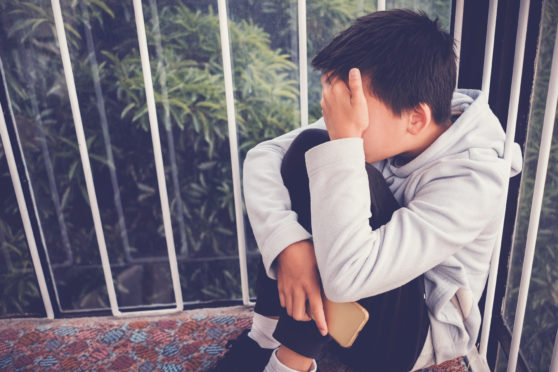
An average of five children a day in Scotland are contacting a helpline due to suicidal thoughts and feelings.
Children’s charity the NSPCC said the number of counselling sessions for those thinking of taking their own lives has risen 90% in three years to 1,781 in 2018-19.
Youngsters contacting the charity with suicidal thoughts and feelings spoke of concerns about mental health, self-harm, family relationships and problems in education.
Across the UK, there were 24,447 counselling sessions for children thinking of taking their own lives.
These were mainly teenagers but there was a sharp rise in number of children under 11 seeking help, up 87% from 2015-16.
Girls were five times more likely to speak about these types of feelings than boys.
Hollie tried to take her own life as a teenager while suffering from chronic anxiety and said the service was her “lifeline”.
She said: “Following a suicide attempt I contacted Childline and spoke to a counsellor about how I was feeling.
“It was that conversation that stopped me from trying to take my life again when I got off the phone.
“Over the next couple of years, I stopped talking, walking, eating and taking care of myself. There were also more stays in hospital.
“Yet despite not talking to anyone, I would often call Childline and chat to a counsellor when I was feeling low. The service was my lifeline during my darkest hours.”
The NSPCC is launching a campaign, KIDS In Real Life, urging the public to help them save a child’s life, calling for donations and pledges to protect children.
Childline founder Dame Esther Rantzen said: “When we launched Childline in 1986, the majority of calls were from young people describing pain caused by someone else – this could include abuse, bullying or neglect.
“But over the last 10 years we have seen a rise in the number of children describing their feelings of such intense unhappiness that they tell Childline they want to end their own lives.
“This new campaign highlights that many of these profoundly unhappy young people hide their feelings to those around them online, bottling up their suicidal thoughts, which may become overwhelming
“Worryingly, we don’t have the resources to be there for every child who needs us, which is why it is so important the public get behind #KIDS-IRL and supports the NSPCC in their mission to be there for all the young people who reach out in their darkest hour.”
Childline can be contacted on 0800 1111 or online via childline.org.uk

Enjoy the convenience of having The Sunday Post delivered as a digital ePaper straight to your smartphone, tablet or computer.
Subscribe for only £5.49 a month and enjoy all the benefits of the printed paper as a digital replica.
Subscribe